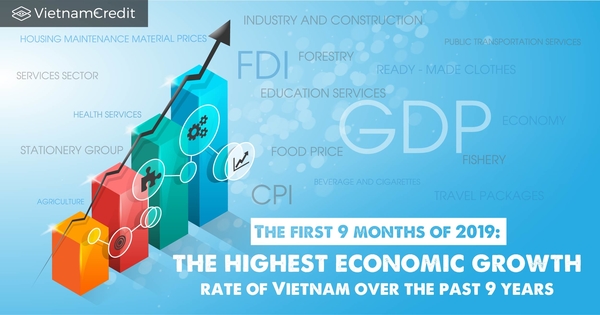In recent years, Vietnamese human resources have continuously made breakthroughs and improved both in quality and professional qualifications. However, compared with developed countries, Vietnam's labor productivity is still low.
Quality of human resources in Vietnam
Vietnam's human resources are increasing along with the increase of population. According to the General Statistics Office (GSO), by 2020, the population of the country is estimated at 97.58 million people, of which the labor force aged 15 and over is about 54.6 million people, accounting for nearly 65% of the country's population. On average, about 500,000 people enter the labor force each year.

Particularly in 2020, due to the impact of the Covid-19 epidemic, the labor force aged 15 and above is estimated to decrease by 1.2 million people compared to 2019, mainly due to a decrease in rural areas (more than 1.1 million people). Among the labor force in 2020, 53.4 million people were employed, over 1 million people were unemployed; about 17.3 million people (2018 and 2019 figures) were economically inactive for various reasons.
According to the World Bank (WB, 2020), Vietnam's human capital index (HCI) increased from 0.66 to 0.69 in 10 years, from 2010 to 2020. Vietnam's human capital index continues to be higher than the average for countries with similar income levels despite lower levels of public spending on health, education and social protection. Vietnam is one of the countries in the East Asia - Pacific region with the highest score on the human capital index (according to the World Bank). This reflects the great achievements in general education and health over the years. Therefore, in the period 2000 - 2017, human capital development contributed about one-third of GDP growth per capita.
Despite large quantity, the quality of human resources in Vietnam is at a low level. The number of skilled workers is only 24.1 million workers (figures in 2021).
Workers who have been trained and have certificates and diplomas at all levels from primary vocational, intermediate, college to university and postgraduate account for 20.92%. In the past 10 years, the proportion of trained workers has increased significantly. However, 76.9% of workers have not been professionally trained.

Regarding labor productivity, according to data from the Ministry of Planning and Investment in 2019, Vietnam's labor productivity was only equal to 7.6% of that of Singapore, 19.5% of Malaysia’s, 37.9% of Thailand's. , 45.6% of Indonesia’s, 56.9% of the Philippines and 68.9% of Brunei’s. Vietnam's labor productivity is only 90% and 88.7% of Laos. In Southeast Asia, the country's labor productivity is only higher than that of Cambodia.
Limitations in Vietnam's human resources
Shortage of high-quality human resources
Although the increase in population has led to a sharp increase in the number of human resources of working age, the number of high quality workers that meet the needs of large enterprises is still limited.
One of the reasons behind this comes from the lack of proper education and training. Domestic workers are still mainly unskilled workers. The structure of labor force is still poor.

As of March 2021, there were 417.3 thousand people with technical expertise who were unemployed (accounting for 39.7%). People with university degrees or higher had the highest unemployment rate (155, 5 thousand people).
Brain drain
Brain drain is the movement of knowledgeable and technical human resources from one country to another. This is the loss of human resources when good domestic workers go abroad to work.
One of the reasons for the "brain drain" in Vietnam is that the salary and bonus regime and working environment are not really satisfactory. In addition, the use labor and arrangement of jobs for highly qualified workers are not reasonable. They have not been given all the conditions and opportunities to develop and advance in their careers.
In the coming time, if businesses and the state do not have solutions to retain talent, the trend of brain drain will continue to increase, which will severely affect the development of the economy.
Source: GSO, WB
Compiled by VietnamCredit


























































